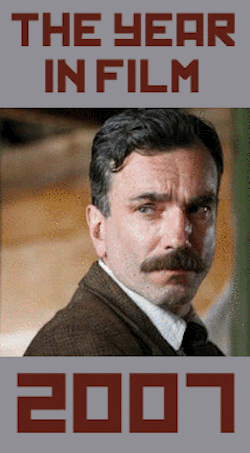Citizen Jane: Battle for the City: Feet on the Ground, by David Bax
As a topic for a movie, “city planning” sounds almost comically dry and uninteresting. When faced with what it really means, though, especially at a time when humanity as a species is increasingly urbanized, almost nothing could be more vital. Citizen Jane: Battle for the City, Matt Tyrnauer’s crackling, vivacious new documentary, brings that vitality forward through most of twentieth century history, finally arriving at the doorstep of our present day.
Though the title implies a biographical portrait, Citizen Jane is more about the ideas its subjected represented than about the woman herself. Jane Jacobs, a journalist whose focus was on architecture and, eventually, city planning, resisted prescriptive attempts to impose order on public and private spaces. Instead, she argued that, essentially, form should follow function. We should allow our cities to take shape according to the way people use them instead of dictating how they are apportioned. Academic and esoteric as this argument may seem, it made her a number of very high-powered enemies.
Before we get to the story of Jacobs and her great triumphs, though, we start in the years before the Second World War, as utopian thinkers began to envision the world of the future as a sterile, technocratic society dominated by the automobile and towers that touched the sky. Before it was just a part of Disneyland, Tomorrowland was a shared dream for an advanced, thriving and progressive society.
As with all utopian thinking, though, this fell apart in practice because it relied on human beings not behaving the way human beings behave. The antiseptic towers they built instead became antisocial and the designated recreation areas went largely unused, turning into violent no-man’s-lands separating one public housing project from another. Jacobs, who had initially championed these ideas when that’s all they were, looked at her own surroundings (she lived in Manhattan’s Greenwich Village) and surmised that diversity of people, class and use is what keeps a city alive as a social organism.
Even after it became clear, though, that these housing projects were failing, they continued to be built. Why? Were these utopian planners true believers who thought they just needed enough time to get it right? Jacobs didn’t think so and, clearly, neither does Tyrnauer, both of whom fervently contend that the projects continued apace simply because the money was rolling in, largely in the form of massive federal grants to individual cities. The planners were getting rich and saw no reason not to continue doing so. Citizen Jane, as a narrative, lucks out in the mere existence of one such planner, Robert Moses. He held various titles throughout New York City’s government for decades, none of them elected positions, and was one of the most visible of his generation of city planners. More importantly, for the sake of this documentary, he made it pretty easy to paint him as a villain. He would openly and arrogantly dismiss the notion that the neighborhoods his highway constructions would decimate held any cultural importance. And, when it came to Jacobs, he was eager to brand her a mere housewife, which was both ignorant of her longtime work as a journalist and gravely underestimating of the power of America’s housewives. The latter is a lesson he would learn when the women of the neighborhood rallied to save Washington Park from his goal to build a traffic thoroughfare through the center of it.
With Citizen Jane, Tyrnauer gives us a stirring portrait of a woman who was both passionate and pragmatic. In our current times, when the need to protest wisely and effectively—not to mention a time when women have come under renewed attacks from those in power—and as the beating heart of America comes to reside less in the quaint small towns of the mid-twentieth century and more and more in its cities, this is a movie for our moment.





























Among ourselves, “city planners” call ourselves simply “planners” and the profession “planning.” Of course its easy then to confuse us with wedding and financial planners, so I sometimes say “land planner” since I’m not really in the city. There are a number of concentrations like transportation, community, and environmental which inevitably overlap in our work together ( I work mainly in environmental and parks/open space).
I have studied Jane Jacobs and Robert Moses before. I first heard of Jacobs in college and Moses when studying for professional certification (AICP). Thanks for posting your review – the film sounds interesting for going in-depth on Jacobs and seeing accompanying imagery. Her famous book was “The Death and Life of Great American Cities” (1961). Most planners today see her as a pioneer in planning theory of whom a lot can be learned from. The best and most implementable plans are those in which the people in the community took part in their making.
“and as the beating heart of America comes to reside less in the quaint small towns of the mid-twentieth century and more and more in its cities, this is a movie for our moment.”
Actually, the population of the US has gotten less urban and more suburban in recent decades. When cities were regarded as dystopian, they were cheap enough that many could afford to live there. As certain urban areas have gotten more expensive, the population (specifically, those without college degrees, who are the majority) has shifted out of them and into suburbs & exurbs. These are typically part of “metropolitan areas” unlike small towns
https://fivethirtyeight.com/features/americans-shift-to-the-suburbs-sped-up-last-year/
In Jacobs’ own Manhattan, the population actually peaked in the first quarter of the 20th century (it hasn’t been shrinking monotonically since then, but you’d expect it to experience natural growth regardless of movement). As economists like Ed Glaeser have noted when evaluating Jacobs’ writing today, the preservation efforts in neighborhoods like Greenwich Village have prevented construction of additional housing units, thus ensuring a relatively small number of people have access to the kind of urban living she held up as an ideal.